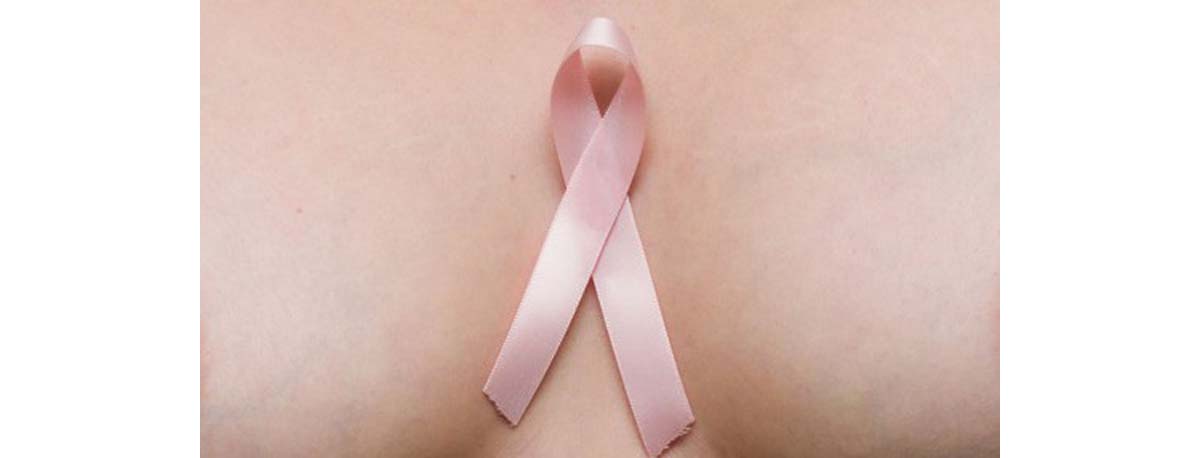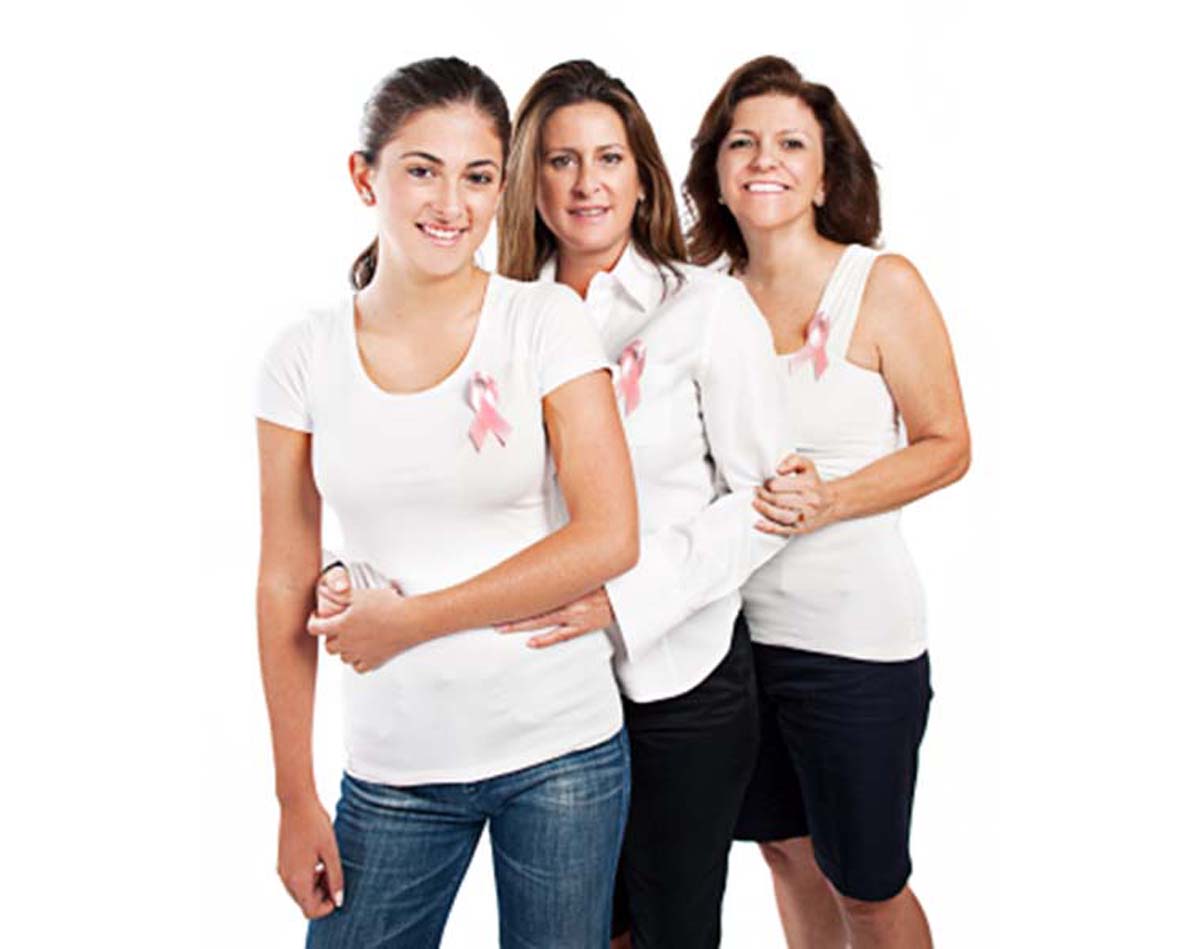Breast Cancer
Breast cancer refers to the sudden and erratic growth of cells that originate in the breast tissue. These groups of cells that divide rapidly tend to form a lump or a mass of unwanted tissue, often referred to as a tumor, which can be either malignant or non-malignant. Malignant tumors are cancerous whereas non-cancerous tumors are benign.

Malignant tumors affect the healthy cells by penetrating them and destroying their normal functions. Portions of the malignant tumor might also break away and spread to other body parts.
The breast comprises two types of tissues, the glandular tissues and the stromal tissues. The glandular tissues comprise the milk producing lobules and the milk ducts. The stromal tissues comprise fatty acids and the fibrous connective tissue. The breast also comprises the lymphatic tissue that is responsible for removing the cellular wastes. Cancerous tumors might arise in any of these parts of the breast.
Types of Breast Cancer in Women
Some common types of breast cancers are listed below:
- Ductal Carcinoma in Situ: It is a form of non-invasive breast cancer when abnormal cancerous cells are found in the lining of the milk ducts of the breast.
- Invasive Ductal Carcinoma: In this type of cancer, the abnormal cancerous cells that originated in the lining of the breast milk ducts invade the surrounding tissues.
- Triple negative breast cancer: This type of cancer is common in younger women and the cancerous cells are negative for estrogen, progesterone, and HER2/neu receptors. These cancerous cells tend to grow faster and more aggressively.
- Inflammatory breast cancer: This type of cancer is less common and might not be accompanied by the development of a lump or a cyst. In this type of cancer, the breast appears to be red and warm and the breast skin might become thick and get a pitted appearance.
- Metastatic Breast Cancer: This type of cancer is characterized by the spread of cancerous cells to other body parts such as the lungs, bones, or the brain.
Stages of Breast Cancer
Breast cancer is classified into various stages for determining the best way to contain and subsequently eliminate the cancer. Several factors that are used for determining the stage of cancer include the size of the tumor within the breast, the number of lymph nodes affected, and the signs that indicate the invasion of breast cells on the other organs of the body. The different stages of breast cancer are listed below:
- Stage 0 and 1: This is the earliest detection stage of breast cancer and signifies that the cancer cells are confined to a very limited area.
- Stage 2: This is also an early detection stage of breast cancer but at this stage the cancerous cells have started to grow and spread. The cancerous cells are still confined in the breast area at this stage.
- Stage 3: This is an advanced stage of cancer when the cancerous cells start invading the tissues near the breast.
- Stage 4: This is also an advanced stage of cancer and by this stage cancer spreads beyond the breast to other organs of the body.
Biology Of Breast Cancer In Older Women
As per a recent research, conducted by Binafsha Syed and her fellow associates at the University of Nottingham, the biological characteristics of breast cancer change with advancement in age. As part of the study, about 1750 old women who were 70 years or older, and were suffering from early operable breast cancer were managed in a dedicated clinic to understand the distinct biology of cancer in older women.

It was found that cancer tends to become less aggressive with advancement in age and therefore treatment choices too should be different in older women. Older women, owing to their frail health might not even be able to tolerate certain specific kinds of treatment.
Some old women who have small tumors are made to undergo certain procedures, for instance, axillary node dissection, which can be avoided as they are not likely to benefit from additional staging information that this procedure will provide.
The primary characteristics of breast cancer in older women are listed below:
- Older women tend to have a unique biological kind of breast cancer, known as low estrogen receptor luminal. Women with this type of breast cancer have shown to have a better survival rate.
- There is high expression of PgR, estrogen receptor (ER), Muc1, Bcl2, BRCA1 and 2, luminal cytokeratins, E-cadherin, HER3, HER4, MDM2 and 4. There is low expression of human epidermal growth factor receptor (HER)-2, p53, Ki67, EGFR and CK17.
- The study of unsupervised partitional clustering depicted that six biological clusters were formed in breast cancer patients. Out of these, five were common in the younger patients. The low ER luminal cluster was distinct in the older women and showed better cancer-survival rate.
- Old women are also likely to have tumors in both the breasts since the factors that contribute to the growth of tumor in one breast are also likely to be present in the other breast.
- In most cases, the tumors in older women are indolent, but aggressive breast cancer cannot be completely ruled out.
Treatment considerations for Cancer in Older Women
In older women, if the overall health is good, doctors advise removal of the tumor through an operation. In certain specific cases, if the health of the patient is frail, doctors might omit radiation. Chemotherapy is often omitted in older women. In a majority of cases, where the women have slow growing tumors, the omission of radiation and chemotherapy might not reduce the overall life span. As per a study, older women who suffer from hormone receptor positive breast cancer and who are either unwilling or are not in a condition to undergo surgery, can also be treated successfully by using the aromatase inhibitor, known as Femara.
Older women, in their seventies, who are otherwise healthy, but are suffering from breast cancer that is likely to metastasize, can benefit by the use of radiation and chemotherapy, similar to what is prescribed to a middle aged cancer patient.
- “Biology of primary breast cancer in older women treated by surgery: with correlation with long-term clinical outcome and comparison with their younger counterparts”, by Syed BM, et al. Published in the March 2013 issue of the British Journal of Cancer, accessed on April 4, 2013
- “Tumor Characteristics and Clinical Outcome of Elderly Women With Breast Cancer”, by Sami. G. Diab, et al. Published in the year 2000, Volume 92, No. 7 issue of the Journal of the National Cancer Institute, accessed on April 4, 2013.
- Photo courtesy of tipstimes on Flickr: www.flickr.com/photos/tipstimes/7483072672


Your thoughts on this